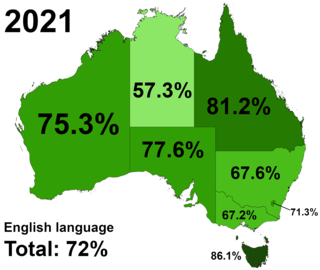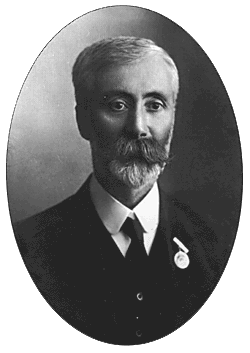Related Research Articles

Australian English is the set of varieties of the English language native to Australia. It is the country's common language and de facto national language; while Australia has no official language, English is the first language of the majority of the population, and has been entrenched as the de facto national language since British settlement, being the only language spoken in the home for 72% of Australians. It is also the main language used in compulsory education, as well as federal, state and territorial legislatures and courts.

Interlingua is an international auxiliary language (IAL) developed between 1937 and 1951 by the American International Auxiliary Language Association (IALA). It is a constructed language of the "naturalistic" variety, whose vocabulary, grammar, and other characteristics are derived from natural languages. Interlingua literature maintains that (written) Interlingua is comprehensible to the hundreds of millions of people who speak Romance languages, though it is actively spoken by only a few hundred.
An adjective is a word that describes or defines a noun or noun phrase. Its semantic role is to change information given by the noun.
An adverb is a word or an expression that generally modifies a verb, adjective, another adverb, determiner, clause, preposition, or sentence. Adverbs typically express manner, place, time, frequency, degree, level of certainty, etc., answering questions such as how, in what way, when, where, to what extent. This is called the adverbial function and may be performed by single words (adverbs) or by multi-word adverbial phrases and adverbial clauses.
A demonym or gentilic is a word that identifies a group of people in relation to a particular place. Demonyms are usually derived from the name of the place. Demonyms are used to designate all people of a particular place, regardless of ethnic, linguistic, religious or other cultural differences that may exist within the population of that place. Examples of demonyms include Cochabambino, for someone from the city of Cochabamba; French for a person from France; and Swahili, for a person of the Swahili coast.
Old Tupi, Ancient Tupi or Classical Tupi is a dead Tupian language which was spoken by the aboriginal Tupi people of Brazil, mostly those who inhabited coastal regions in South and Southeast Brazil. In the words of Brazilian tupinologist Eduardo Navarro, "it is the classical indigenous language of Brazil, and the one which had the utmost importance to the cultural and spiritual formation of the country".
Yapese is a language spoken by the people on the island of Yap. It belongs to the Austronesian languages, more specifically to the Oceanic branch of that family. It has been difficult to classify it further, but Yapese may prove to be one of the Admiralty Islands languages. The Yapese language refers to the language spoken specifically on the Yap Main Islands, and does not include the Chuukic languages spoken in the Yap Neighboring Islands: Ulithian, Woleaian, and Satawalese.

Atakapa is an extinct language isolate native to southwestern Louisiana and nearby coastal eastern Texas. It was spoken by the Atakapa people. The language became extinct in the early 20th century.
Awabakallanguage is an Australian Aboriginal language that was spoken around Lake Macquarie and Newcastle in New South Wales. The name is derived from Awaba, which was the native name of the lake. It was spoken by Awabakal and Wonnarua peoples.

Joseph Henry Maiden was a botanist who made a major contribution to knowledge of the Australian flora, especially the genus Eucalyptus. This botanist is denoted by the author abbreviation Maiden when citing a botanical name.
Myalls are any of a group of closely related and very similar species of Acacia:

Anindilyakwa is an Australian Aboriginal language spoken by the Anindilyakwa people on Groote Eylandt and Bickerton Island in the Gulf of Carpentaria in the Northern Territory of Australia. Anindilyakwa is a multiple-classifying prefixing language in which all traditional nouns, adjectives, personal and demonstrative pronouns are prefixed for person, number and gender. According to the 2021 Australian Census, Anindilyakwa was spoken natively by 1,516 people, an increase from 1,283 in 2006.
Edward Ellis Morris was an English educationist and miscellaneous writer and latterly in colonial Australia.
Blue gum is a common name for subspecies or the species in Eucalyptus globulus complex, and also a number of other species of Eucalyptus in Australia. In Queensland, it usually refers to Eucalyptus tereticornis, which is known elsewhere as forest red gum.
The Australian National Dictionary: Australian Words and Their Origins is a historical dictionary of Australian English, recording 16,000 words, phrases, and meanings of Australian origin and use. The first edition of the dictionary, edited by W. S. Ramson, was published in 1988 by Oxford University Press; the second edition was edited by Bruce Moore at the Australian National Dictionary Centre and published in 2016.
References
- ↑ Edward E. Morris (1896). Dictionary of Australian Words.
- ↑ "Acaena ovina". Yarra Ranges Council. Retrieved 28 June 2023.